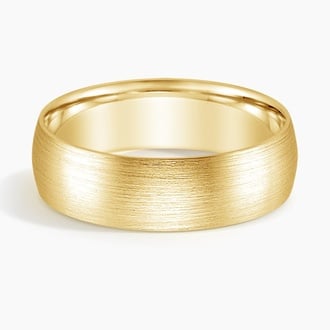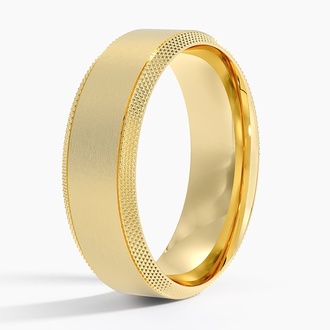A matte men's wedding band features a distinctive finish that absorbs light rather than reflecting it. Neither shiny nor overly eye-catching, matte men's wedding bands are an edgy yet understated alternative to more classic wedding band styles. Adding an element of texture to fine jewelry, such as a matte finish, adds a unique and striking component that enhances one’s personal style, making these wedding rings an excellent choice for those looking for a sleek style with a hint of trend-forward design.
Our curated collection of men's wedding bands in matte finish range in style from classic beveled edges to nature-inspired engravings and modern bands that feature diamonds and gemstones. Choosing a matte men's wedding band that represents your individual preference and celebrates your unique love story creates a meaningful item you are sure to treasure for a lifetime.



































































